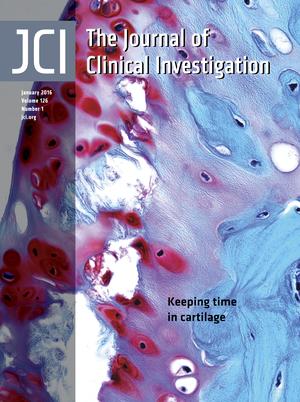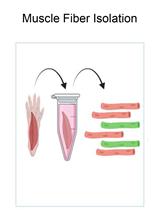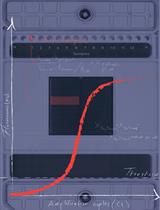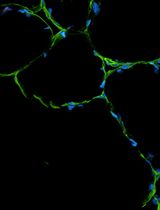- EN - English
- CN - 中文
Isolation, Culture, and Staining of Single Myofibers
单肌纤维的分离、培养和染色
发布: 2016年10月05日第6卷第19期 DOI: 10.21769/BioProtoc.1942 浏览次数: 15493
评审: Jia LiIrit AdiniAnonymous reviewer(s)
Abstract
Adult skeletal muscle regeneration is orchestrated by a specialized population of adult stem cells called satellite cells, which are localized between the basal lamina and the plasma membrane of myofibers. The process of satellite cell-activation, proliferation, and subsequent differentiation that occurs during muscle regeneration can be recapitulated ex vivo by isolation of single myofibers from skeletal muscles and culturing them under suspension conditions. Here, we describe an improved protocol to evaluate ex vivo satellite cells activation through isolation of single myofibers from extensor digitorum longus (EDL) muscle of mice and culturing and staining of myofiber-associated satellite cells with the markers of self-renewal, proliferation, and differentiation.
Keywords: Single myofiber cultures (单纤维文化)Background
Although skeletal muscle is a fully differentiated post-mitotic tissue, it maintains intrinsic capability to regenerate in response to both genetic and acquired forms of muscle fiber damage (Le Grand and Rudnicki, 2007). Muscle regeneration in adults is mediated by a population of stem cells known as satellite cells which reside between the basal lamina and sarcolemma of myofibers in a mitotically quiescent state (Le Grand and Rudnicki, 2007). In response to muscle trauma, satellite cells become activated and proliferate to produce myoblasts that fuse with pre-existing fibers and with one another to repair or produce new myofibers. A small portion of satellite cells does not differentiate but instead reenters quiescence to maintain the stem cell pool. Satellite cells of all mammalian species express paired-box (Pax) transcription factor Pax7 which is also used as a critical marker to determine the fate of satellite cells in association with other myogenic factors such as MyoD (Le Grand and Rudnicki, 2007; Kuang et al., 2006; Kuang and Rudnicki, 2008).
The in vivo process of muscle regeneration with respect to satellite cell activation, proliferation, and differentiation can be partly recapitulated through suspension culture of myofiber explants (Rosenblatt et al., 1995; Shefer and Yablonka-Reuveni, 2005). The process of myofiber isolation which involves digestion of muscle tissue with matrix-degrading enzymes (e.g., collagenases) and mechanical shearing causes minor trauma which leads to the activation of satellite cells on myofibers. Immediately upon isolation, each myofiber is associated with a fixed number (Pax7+/MyoD-) of satellite cells resting in quiescence. At around 24 h in culture, satellite cells undergo their first round of cell division, through upregulating MyoD (Pax7+/MyoD+) and proliferate to form cell aggregates by 72 h. Satellite cells on cultured myofiber explants can either terminally differentiate (Pax7-/MyoD+) or self-renew (Pax7+/MyoD-) and return to quiescence (Le Grand and Rudnicki, 2007). The myofiber culture system has served as an excellent platform to study the fundamental properties of muscle stem cells and the effects of various genetic manipulations on the basic properties of satellite cells. One of the major advantages of isolated single myofiber cultures is that the physical interaction between the myofiber and satellite cells is preserved in the sense that satellite cells are still maintained beneath the basal lamina (Bischoff, 1986). Furthermore, suspension cultures of myofibers are routinely used to study the effects of various pharmacological compounds and overexpression or knockdown of specific proteins on self-renewal, proliferation, or differentiation of satellite cells (Shefer and Yablonka-Reuveni, 2005; Anderson et al., 2012; Keire et al., 2013). They also provide a useful tool to study the motility of satellite cells on myofibers through live imaging (Siegel et al., 2009). In addition, a few investigators have used isolated single myofibers explants to prepare pure myoblast cultures in which the cells are mostly derived from the myofiber-associated satellite cells.
The isolation of single myofibers from flexor digitorum brevis (FDB) was first described by Bischoff (1986). This protocol was modified later by Rosenblatt et al. to allow handling of single myofibers after collagenase digestion (Rosenblatt et al., 1995). Since then several modifications have been proposed which improved the yield and the handling of the isolated myofibers (Shefer and Yablonka-Reuveni, 2005; Anderson et al., 2012; Verma and Asakura, 2011; Pasut, 2013). However, most of the published protocols still do not produce a sufficient number of myofibers in a single preparation primarily because of under or over digestion with collagenase and the loss of myofibers during picking, sub-culturing, or staining. The amount of time to digest a muscle from rodents may vary with genetic background and healthy versus diseased muscle. In our laboratory, we are now using a six-well tissue culture plate in which the digestion and physical separation of individual myofibers can be visually monitored under a phase contrast microscope. Furthermore, we have developed an improved protocol to stain the myofiber-associated satellite cells for various markers (Hindi et al., 2012; Hindi and Kumar, 2016; Ogura et al., 2013). In this article, we provide the detailed protocol for the isolation, culturing, and staining of myofiber-associated satellite cells for Pax7 and MyoD protein. The same protocol can be adapted for staining of other proteins in satellite cells of myofiber explant.
Materials and Reagents
- Disposable borosilicate glass Pasteur pipets (Thermo Fisher Scientific, Fisher Scientific, catalog number: 13-678-20B )
- Sterilization pouches (Thermo Fisher Scientific, Fisher Scientific, catalog number: 01-812-51 )
- 6-well plates (Corning, Falcon®, catalog number: 353046 )
- 0.22 µm filter (EMD Millipore, catalog number: SLGP033RS )
- 0.45 µm filter (EMD Millipore, catalog number: SLHV033RS )
- 24-well plates (Corning, Falcon®, catalog number: 353047 )
- Adult mice (Mus musculus; ≥ 6-week old)
- Horse serum (Thermo Fisher Scientific, GibcoTM, catalog number: 26050-088 )
- Dulbecco’s modified Eagle’s medium (DMEM) high glucose, pyruvate (Thermo Fisher Scientific, GibcoTM, catalog number: 11995-065 )
- N-2-hydroxyethylpiperazine-N-2-ethane sulfonic acid (HEPES) (1 M) (Thermo Fisher Scientific, GibcoTM, catalog number: 15630-080 )
- Penicillin-streptomycin (Pen/Strep) (Thermo Fisher Scientific, GibcoTM, catalog number: 15140-122 )
- Collagenase II (Worthington Biochemical Corporation, catalog number: LS004176 )
- Ultra-pureTM water (Thermo Fisher Scientific, InvitrogenTM, catalog number: 10977-015 )
- Phosphate buffered saline (PBS) (Thermo Fisher Scientific, GibcoTM, catalog number: 10010-023 )
- 2, 2, 2-tribromoethanol (Avertin) (Sigma-Aldrich, catalog number: T48402 )
- 100% ethanol (Thermo Fisher Scientific, Fisher Scientific, catalog number: 2701 )
- Tris base (Thermo Fisher Scientific, Fisher Scientific, catalog number: BP152-5 )
- Recombinant human fibroblast growth factor-basic (bFGF) (PeproTech, catalog number: 100-18B )
- Bovine serum albumin (BSA) (Sigma-Aldrich, catalog number: A2153 )
- Fetal bovine serum (FBS) (Thermo Fisher Scientific, GibcoTM, catalog number: 10437-028 )
- Chicken embryo extract (CEE) (Antibody Production Services, catalog number: MD-004E )
- Paraformaldehyde (PFA) (Sigma-Aldrich, catalog number: P6148 )
- 100% Triton X-100 (Thermo Fisher Scientific, Fisher Scientific, catalog number: BP151-500 )
- Glycine (Thermo Fisher Scientific, Fisher Scientific, catalog number: BP381-5 )
- 5% (w/v) sodium azide (Thermo Fisher Scientific, Fisher Scientific, catalog number: 71448-16 )
- Primary antibody anti-MyoD (rabbit) (Santa Cruz Biotechnology, catalog number: sc-304 )
- Primary antibody anti-Pax7 (mouse) (Developmental Studies Hybridoma Bank, catalog number: PAX7 )
- Secondary antibody goat anti-rabbit Alexa Fluor® 488 conjugate (Thermo Fisher Scientific, catalog number: A-11034 )
- Secondary antibody goat anti-mouse Alexa Fluor® 568 conjugate (Thermo Fisher Scientific, catalog number: A-11004 )
- 4’,6-diamidino-2-phenylindole dihydrochloride (DAPI) (Sigma-Aldrich, catalog number: D8417 )
- Collagenase II (see Recipes)
- Digestion medium (see Recipes)
- Washing solution (see Recipes)
- 70% ethanol (see Recipes)
- Basic fibroblast growth factor (bFGF) (see Recipes)
- Chicken embryo extract (CEE) (see Recipes)
- Myofiber growth medium (MfGM) (see Recipes)
- 4% paraformaldehyde (PFA) (see Recipes)
- 10% Triton X-100 (see Recipes)
- Quenching solution (see Recipes)
- Blocking solution (see Recipes)
Equipment
- Water bath (Thermo Fisher Scientific, Fisher Scientific, catalog number: 15-462-15Q )
- Microscope (Nikon Instruments, model: TE2000 )
- CO2 incubator (Thermo Fisher Scientific, Thermo ScientificTM, catalog number: 3578 )
Procedure
文章信息
版权信息
© 2016 The Authors; exclusive licensee Bio-protocol LLC.
如何引用
Gallot, Y. S., Hindi, S. M., Mann, A. K. and Kumar, A. (2016). Isolation, Culture, and Staining of Single Myofibers. Bio-protocol 6(19): e1942. DOI: 10.21769/BioProtoc.1942.
分类
发育生物学 > 细胞生长和命运决定 > 肌纤维
干细胞 > 成体干细胞 > 肌肉干细胞
您对这篇实验方法有问题吗?
在此处发布您的问题,我们将邀请本文作者来回答。同时,我们会将您的问题发布到Bio-protocol Exchange,以便寻求社区成员的帮助。
提问指南
+ 问题描述
写下详细的问题描述,包括所有有助于他人回答您问题的信息(例如实验过程、条件和相关图像等)。
Share
Bluesky
X
Copy link














